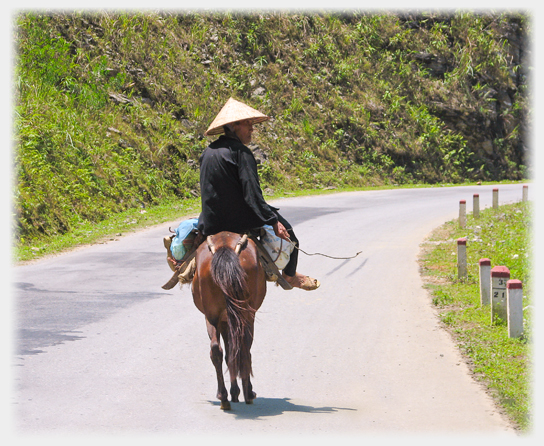
|
Life's Journey
Matsuo Bashō (1644 – 1694)
These are the beautiful opening lines of Basho's book 'The Narrow Road to the Interior', as translated by Sam Hamill, which tell us of travels both geographic and internal (Hamill, 1998). Basho was born in 1644, and by the age of 30 had became known for his poetry, a position confirmed by posterity which holds him as chief among the Edo Poets. At 36 he gave up the feted life of a teacher concentrating on his Zen practice, misfortunes followed and may have contributed to his undertaking, in his forties, four long solitary journeys. These led to the writings which have made him world famous. He died when he was 50.
His legacy is not just a record of exceptionally perceptive thoughts, but also the combination of calligraphy and painting to which he brought the same sparse elegance. This combination, known as Haiga (literally 'comic painting' as they are often ironic or amusing) is challenging to transpose into English, relying as it does on the interaction of the meaning of image, ideogram and poem. But the effort required by us, to see into a different world, is richly rewarded.
The journey Basho describes, starts with an echo of the sadness in a poem from the Classical period–Li Po's 'In the Spring Time' (Shigeyoshi Obata, 1922), from which a reverberation of beauty, peace, loneliness, and ageing, comes down to us, as pertinently to our journeys today, as it was over twelve hundred years ago. Basho sees these themes as patterns for us all, they structure human experience, and when we can come to live with them, and in them, we can be at home. So as the sun and moon undertake their journeys, so our life, our journey, whatever its travails, becomes the only real home we have. Home is in each day, each step; in the present. The journey is both those individual steps and the whole undertaking; both everyday and eternal. The choice of the word 'journey' by translators is so apposite. Currently a protracted outing, it derives from the Latin (diurnum) for a day’s portion, giving the distance travelled in a day. And hence also the French for day (jour) and the English diurnal and journal.
The theme, of the importance of today, of the present, is familiar in our culture, from Matthew's 'Take no thought for the morrow: for the morrow shall take thought for the things of itself' (Matthew), through to Tolle's 'The Power of Now'; and Tolle too takes up the idea of our inner life being a journey (Tolle, 1999). At the heart of this relationship, between the present step, and the whole journey, lies the point where the future unknown becomes the known present, and this in turn becomes past. This point between future and past is the knife edge that meditation seeks, and with which Basho, a Buddhist poet, would have been very familiar. This is the point of emergence.
References
- Hamill, Sam (1998, translation) 'Narrow Road to the Interior and Other Writings' Boston, Shambhala. ISBN 978-1-57062-716-3 This is a beautiful English version–there are many available. Matsuo Bashō (1694) 'The Narrow Road to the Interior'.
- The Holy Bible (1611) King James rendering.
- Shigeyoshi Obata (1922, translation) 'The Works of Li Po The Chinese Poet, done [sic] into English verse'. E P Dutton & Co, New York. Li Po (701-762).
- Tolle, Eckhart (1999) 'The Power of Now' Hodder & Stoughton. UK version 2001.
6th September 2014 ~ 2nd October 2015